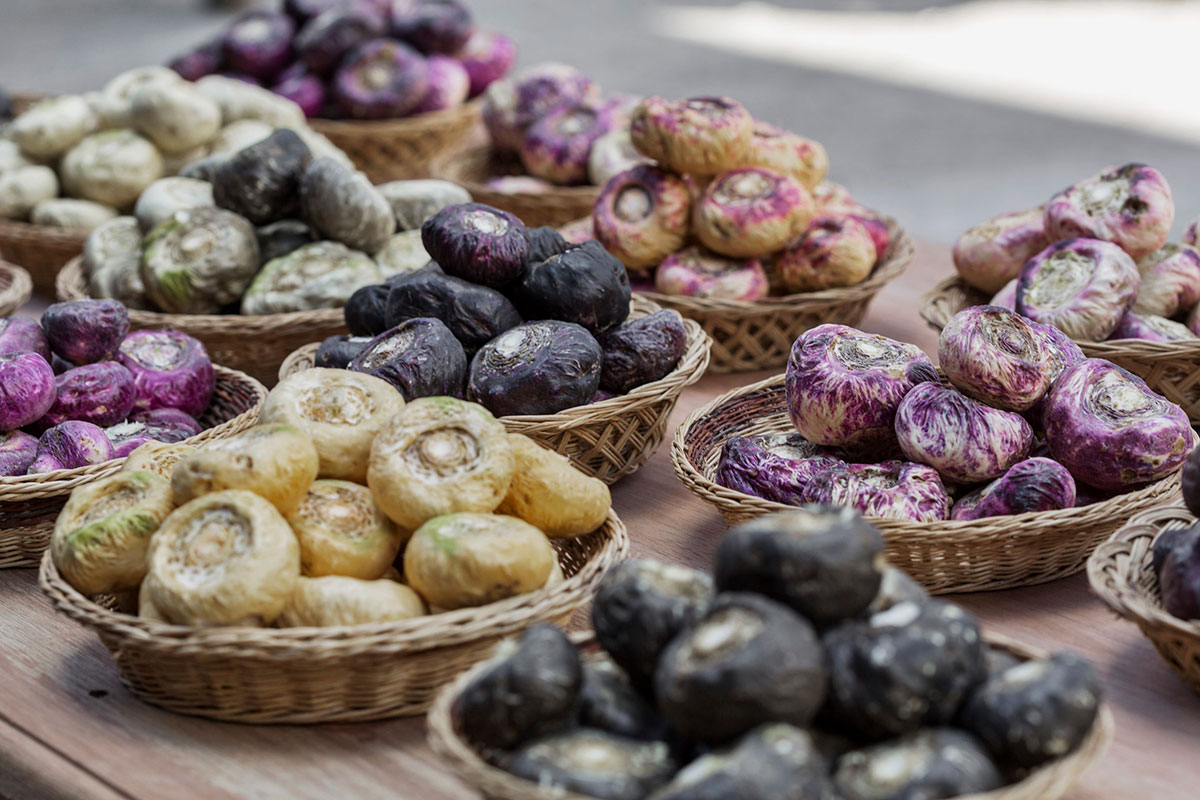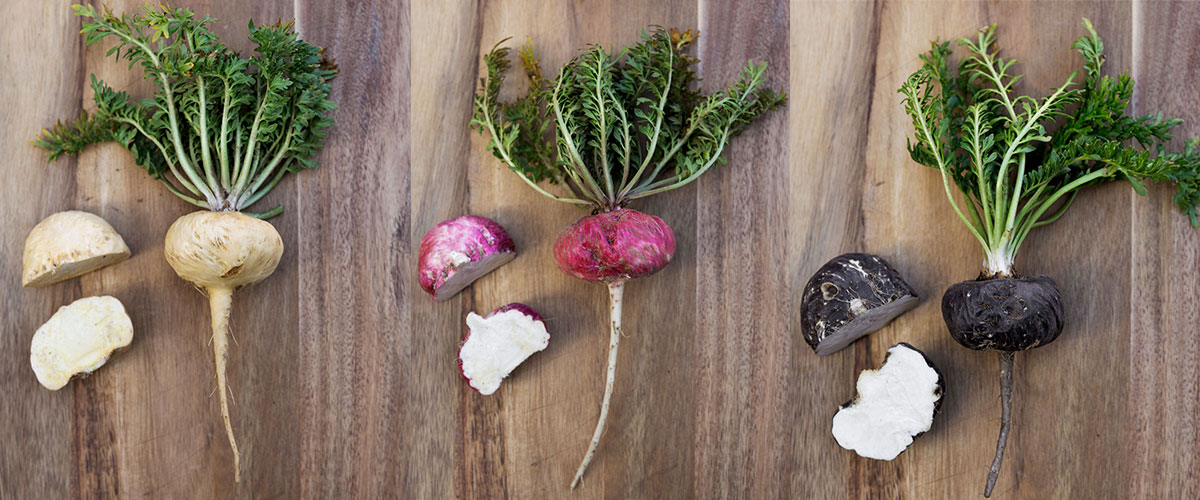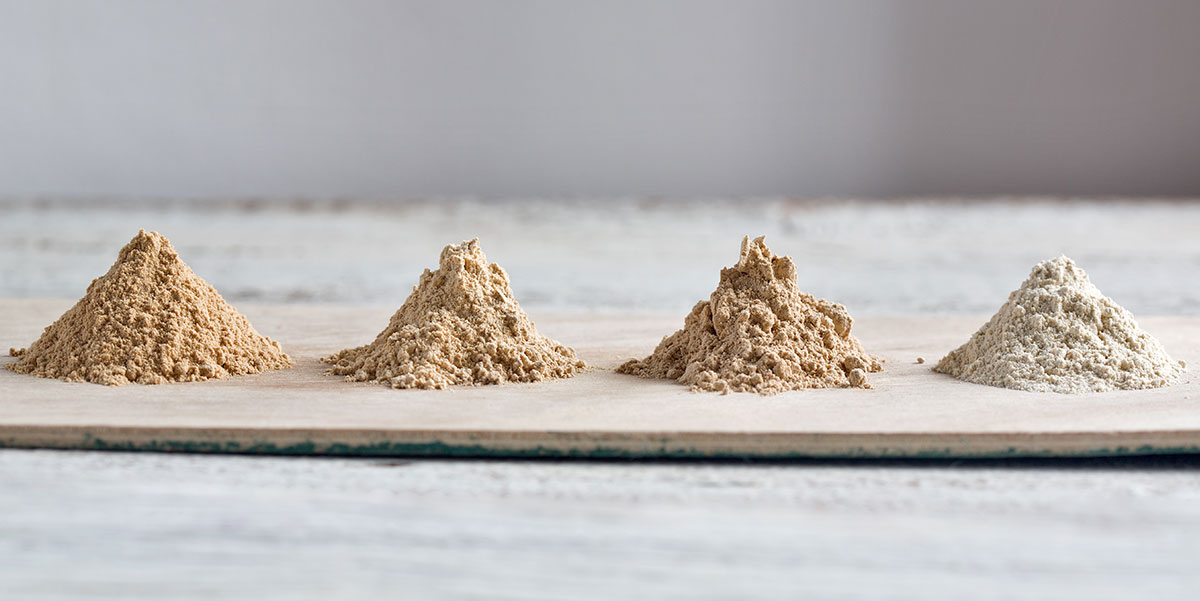Are Red, Black and Yellow Maca Powders Similar In Color, Taste and Texture?
Introduction:
If you’re here to learn about the differences in color, taste and texture between the distinct types of maca, you’re in the right place. We’ve been enjoying and selling maca since the late 1990s and have often been asked questions like these:
- Is red maca powder supposed to be red?
- Is black maca root powder black?
- Is yellow maca root powder yellow?
- Why are all maca root powders an off-white color?
- Does red maca powder taste different than yellow or black?
- Is all maca powder grainy or is some more refined?
They are all excellent questions, especially since most of us never see a whole maca root. Very few of us ever get to observe a maca root in person since it is, in fact, unlawful to export whole maca roots from Peru (the closest we are allowed to bring to market are our maca root chips).
Understanding the major colors of maca roots
From the image below, you can see that maca roots grow in a relatively wide range of colors. One of the farmers we work with has identified over 30 eco-types of maca based on the colors present in them. There are roots with stripes, blotches, spirals and more. There are also roots of various shaded of colors.

That said, maca roots are grouped into 3 basic ranges of colors.
- Beige to gold colored maca roots are considered to be “yellow” maca
- Light pink to dark purple maca roots are considered to be “red” maca
- Light gray to dark gray maca roots are considered to be “black” maca
Traditionally, maca roots were all lumped together during harvest, regardless of their specific color. That is why we call our Tri-Color Maca a “heritage harvest” product. Since the early 2000s, researchers have looked carefully at some of the different properties of the 3 major maca colors and discovered a few significant differences. More research is ongoing to understand these differences, but they are notable enough to warrant separating the 3 colors during production of maca root powders.
Why all maca powders are similar in color
Because of the external appearance of varying maca roots, you might expect that red maca powder would be reddish in color, that black maca powder would be grayish and that yellow maca powder would be yellow. That, however, is not the case. This is because the color of maca roots is found primarily in the skin, something like a radish which is red on the outside but white on the inside. Have a look at the image below to observe the differences for yourself.

The result is that there are only slight differences between the 3 major colors of maca powder. All are an off white, but red and black maca powders are typically a bit darker than yellow powders – although that can also change.
How maca powders can vary in color, taste and texture from batch to batch
Over the years of sourcing and selling maca we have noticed that maca colors vary slightly from batch to batch. For example, one batch of Black Maca may be darker than another or another batch may be even lighter than Yellow Maca powder. There is good reason for this. It is due to the ratio of light to dark colored roots that are used in making a batch of powder. Some black maca powders are made with a larger proportion of dark gray roots, thus resulting in a darker colored powder. Others are made with a larger proportion of very light gray roots, thus resulting in a lighter colored powder. The same holds true for red and yellow maca powders as well.
We’ve also noticed that the aroma and texture of our maca powders can vary a bit from year to year as well. These depend on several factors including the exact location of the fields, the environmental conditions of the harvest (drought, extra sunshine, etc.), the drying process and more. We work with organic farmers who use traditional methods in their practices and this variation is simply normal, as it is with any organic, Non-GMO crop.
One other note when it comes to color of maca powders it that our premium process maca powders are lighter in color than our standard sundried maca powders. This is because premium maca powder comes from roots that are dried and processed immediately after harvest. This prevents any darkening due to oxidation. To give you a sense of this, here is an image of sundried yellow, black, red and premium tri-color maca powders (left to right). 
How different colored maca tastes
Should you expect different colored maca to taste differently? This is also an excellent question. In general terms, all maca has a unique caramel/malt taste. Beyond that, we’ve noticed that red maca powder tends to be slightly sweeter in taste and that yellow maca powder tends to be the most neutral.
If you purchase any of our premium maca powders, you should expect them to be significantly more pungent in flavor. Some people describe them as “spicy.”
What the texture of maca powder should be like
The general texture of maca powder should be fine. We do standardize our grinding process. In this process all of the individual grains of maca powder have to be small enough to pass through a fine screen. That means the overall texture should be similar from batch to batch. Sometimes, however, maca powder does form small clumps. This is because of how tightly maca is packed when it is shipped to us in bulk. If you find any clumps in your maca, that is normal and you can simply break them up with a spoon.
Conclusion
We hope that this article has answered any question you might have regarding the different colors of maca powder. If your maca powder is lighter or darker than expected or if it doesn’t taste or smell exactly the same, please know that those differences are part of the variety of nature. We can assure you that our farms produce the highest quality organic maca using the most traditional and careful methods. Our processors select only grade “A” maca roots. The maca powders we receive from them are kept in different locations in our warehouse and our bags our hand-packed with precision and accuracy.
If you’d like to see Mark, the owner of The Maca Team, in Peru showing the differences between maca root colors please have a look at this video.
Enjoy the day!
![]()
